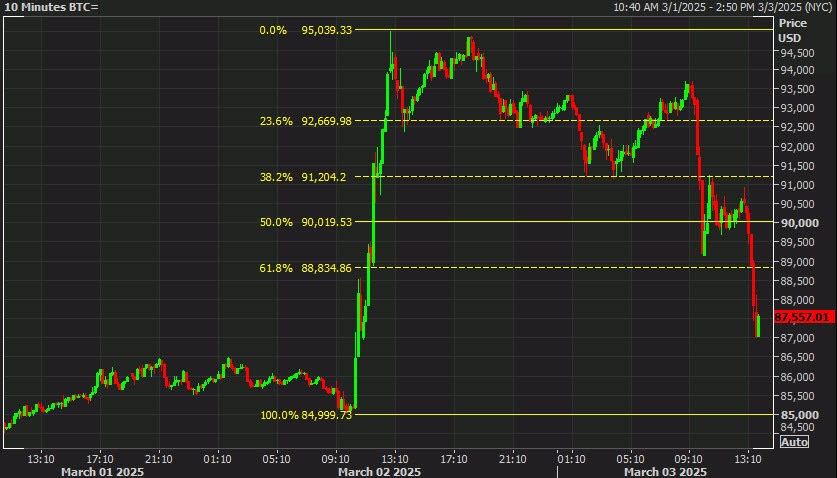
Bitcoin’s recent rally, fueled by optimism around strategic reserve accumulation, has started to fade as selling pressure returns to the market. After briefly surging on speculation that more institutions and sovereign entities were stockpiling BTC as a hedge against inflation and geopolitical risks, the cryptocurrency has retraced much of its gains.
The Strategic Reserve Narrative: A Short-Lived Boost?
The idea that central banks, corporations, and even nation-states might be accumulating Bitcoin as part of their strategic reserves gained traction in recent weeks. Several factors contributed to this belief:
• MicroStrategy’s Continued Accumulation: Michael Saylor’s MicroStrategy added more BTC to its balance sheet, reinforcing the narrative that large players still see long-term value in Bitcoin.
• Geopolitical Uncertainty: Countries facing sanctions or currency instability, such as Argentina and certain Middle Eastern nations, have explored Bitcoin as an alternative reserve asset.
• Spot Bitcoin ETFs: The growing success of spot Bitcoin ETFs in the U.S. led to significant institutional inflows, further driving bullish sentiment.
However, despite this momentum, Bitcoin has failed to hold onto its highs, suggesting that the buying pressure was not as strong as initially expected.
Why Bitcoin Is Fading the Pump
1. Profit-Taking by Whales and Institutions
As Bitcoin approached key resistance levels, large investors likely took profits, leading to selling pressure. Short-term traders who entered during the recent surge may also be exiting their positions.
2. Macroeconomic Factors
The broader financial landscape remains uncertain, with interest rate decisions, inflation data, and global economic instability influencing risk assets. If macroeconomic conditions tighten, Bitcoin’s appeal as a reserve asset could weaken in the short term.
3. Market Liquidity and ETF Outflows
While Bitcoin ETFs saw strong inflows initially, some have begun experiencing outflows, which could indicate that demand is stabilizing rather than accelerating. Additionally, liquidity remains a concern, with lower volumes making price swings more volatile.
4. Technical Resistance Levels
Bitcoin faced significant resistance at key levels, causing a pullback as traders reacted to overbought conditions. If BTC fails to reclaim these levels, further downside could be expected.
What’s Next for Bitcoin?
Despite the recent fade, Bitcoin’s long-term outlook remains strong. Institutional adoption, increasing scarcity due to the upcoming halving, and the continued expansion of the Bitcoin network all point to a bullish future. However, in the short term, BTC may continue to consolidate or correct before resuming its upward trend.
Key Levels to Watch
• Support: If Bitcoin holds key support levels around $55,000–$58,000, it could stabilize before attempting another breakout.
• Resistance: A decisive move above $65,000 would signal renewed strength and potential for a new all-time high.
